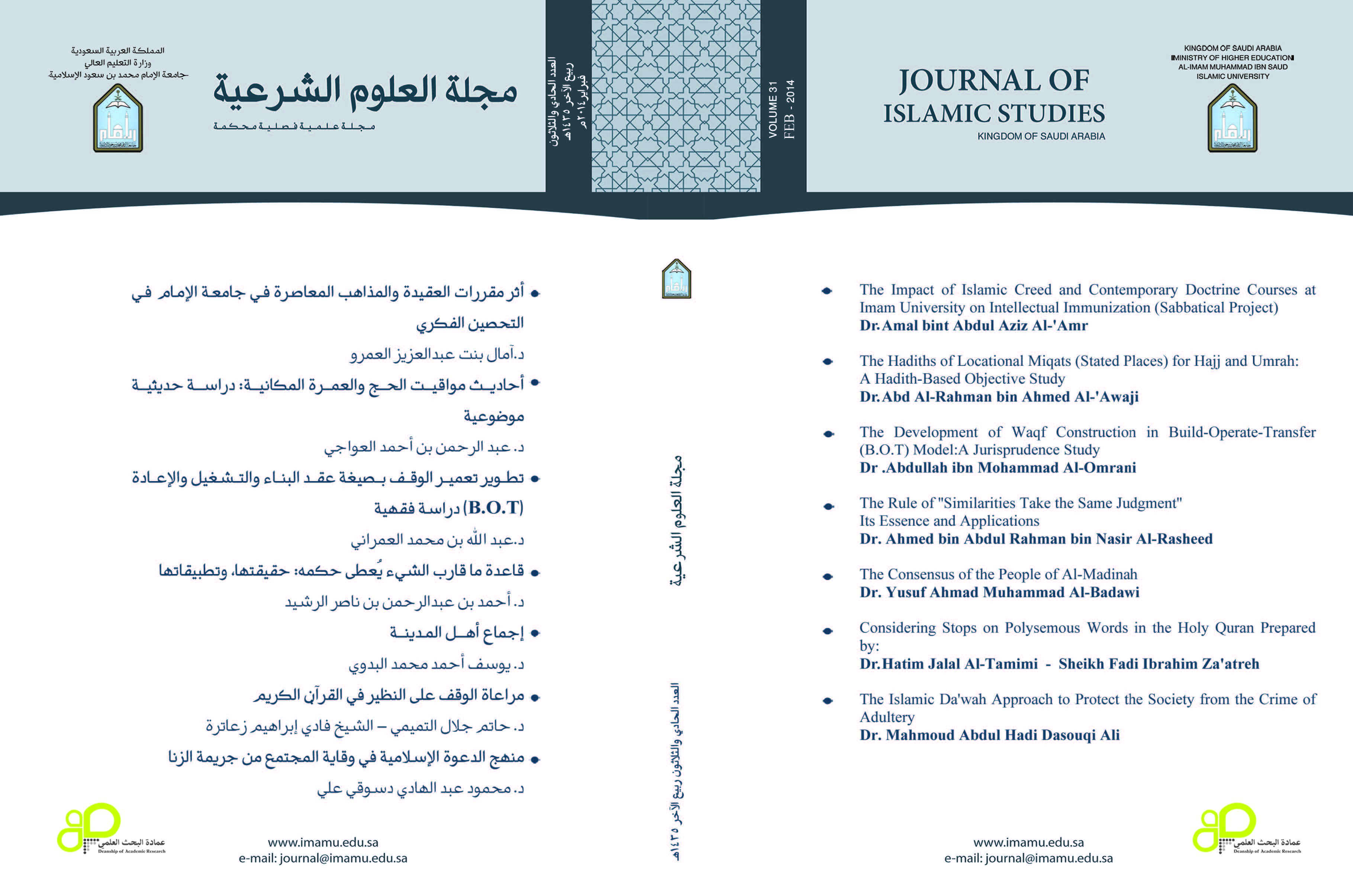The Development of Waqf Construction in Build-Operate-Transfer (B.O.T) Model: A Jurisprudence Study
Abstract
This paper investigates the reality of build-operate-transfer (B.O.T) Model and its jurisprudent description, and judiciary rules, as well as the jurisprudent rules of the B.O.T model in funding of wqaf. It also identifies the application of the B.O.T model in the field of wqaf, and developing it with regard to its objectives, and the objectives and rules of wqaf.
The study has arrived to the fact that the closest jurisprudent description of this contract is that it is a construction with a rent to make a profit during the period of authorization, where two contracts are made in one contract.
By considering the two contracts of construction and rent that compose the B.O.T model, there are no consequences of interest, risk, or contrast between the two contracts can be when joining the two contracts in one compensation. Thus, it is clear that the B.O.T model is permissible and by studying the rules of waqf, and comparing similar forms to the B.O.T model, it becomes evident that constructing wqaf in the form of B.O.T is permitted. It is also considered to be one of the best choices in constructing wqaf, as long as the waqf controls are considered. The most important are: the non-transfer of the waqf-land possession to the company of the project, where the contract in this form is in the interest of the waqf, and there are no better ways for funding the waqf, e,g, the lands of wqaf that remain for years without development or construction, due to the lack of sufficient funding, or in cases the waqf is unsurpassed.
The B.O.T model should be made in the presence of waqf supervisor or administer or the authorized body, so as to specify the standards in detail, and make reference to all that can preserve the waqf, and keep its rights.




